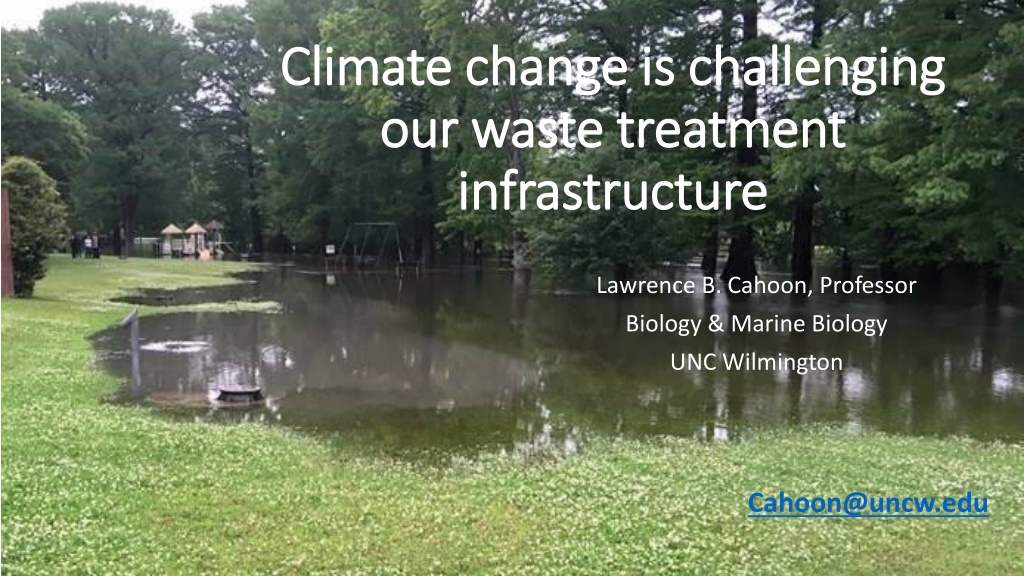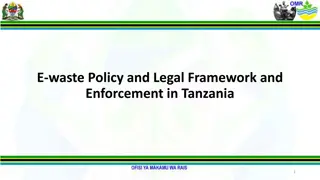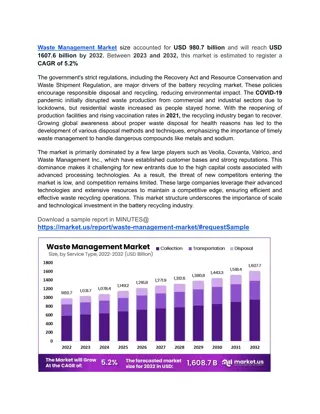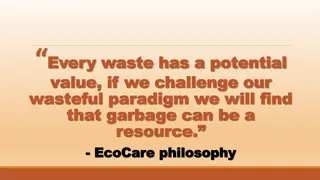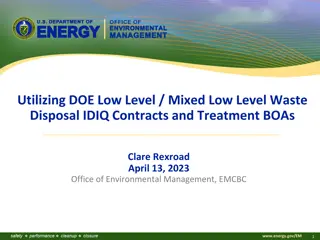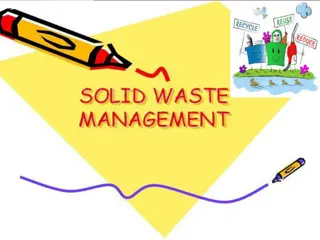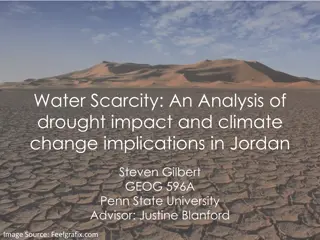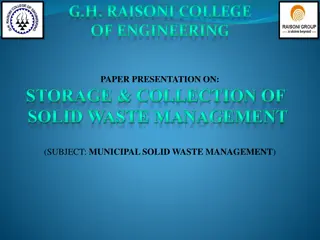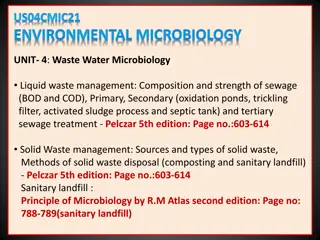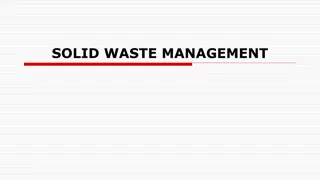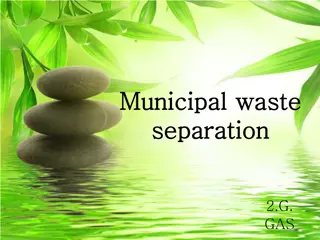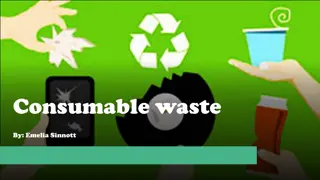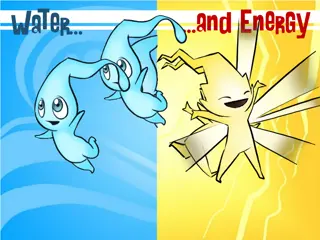Climate Change Impact on Waste Treatment Infrastructure
Climate change poses significant challenges to waste treatment infrastructure, affecting the integrity of both central and on-site systems. Factors such as rainfall, temperature, sea level rise, and saltwater intrusion are leading to extraneous flows and compromised systems, resulting in potential harm to water quality and human health. Heavier rains, shifting climate patterns, and rising sea levels exacerbate the issue of combined effects on waste treatment systems, emphasizing the need for proactive measures to address these challenges.
Download Presentation

Please find below an Image/Link to download the presentation.
The content on the website is provided AS IS for your information and personal use only. It may not be sold, licensed, or shared on other websites without obtaining consent from the author. Download presentation by click this link. If you encounter any issues during the download, it is possible that the publisher has removed the file from their server.
E N D
Presentation Transcript
Climate change is challenging Climate change is challenging our waste treatment our waste treatment infrastructure infrastructure Lawrence B. Cahoon, Professor Biology & Marine Biology UNC Wilmington Cahoon@uncw.edu
Challenge: Integrity of waste treatment systems Central and on-site systems below ground. Vital, expensive, but almost invisible. Extraneous flows: Inflow and infiltration (I&I) in central WWT systems. I&I can cause SSOs harms to water quality and human health.
Combined effects of rainfall, temperature and sea level sea level on flows Significant lunar cycle sea level effects Salt water effects on systems and treatment SLR: slow but deadly
Combined effects of rainfall, temperature sea level on flows temperature and Temperature = seasonality Tourist season visitation (+) Evapotranspiration effect (-) Warmer = lower water table (unless it rains ..)
Combined effects of rainfall sea level on flows Rainfall: frontal and convective systems Winter rains vs. groundwater levels Rainfall: the premier effect of climate change rainfall, temperature and
Rainfall effects on I&I in 92 coastal WWT Rainfall effects on I&I in 92 coastal WWT system flows (2010 system flows (2010- -2011) 2011) Broad, significant rainfall effects Small town WWT systems having troubles - $$? Widespread potential for SSOs
What goes up must come down What goes up must come down Water vapor vs. Temperature Messages [Water vapor] in air rises exponentially with temperature. Water vapor is NOT infinitely soluble in air. More extreme rain events are happening and will get worse.
Some take Some take- -home messages: home messages: Heavier rains, shifting climate patterns, more and nastier hurricanes, and sea level rising, so I&I-driven SSOs will be more frequent. Maintaining high quality waste treatment infrastructure will be expensive! It s time to develop and permit better waste treatment technology.
